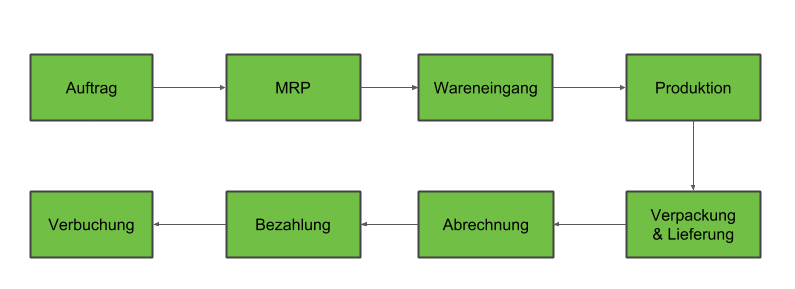Share this Post
In view of the fact that metasfresh ERP is subject to ongoing development and upgrading, the purpose of our end-to-end testing process is to test the core processes of the entire software from start to finish and ensure trouble-free operability. Upon developing a new version, therefore, this comprehensive end-to-end testing procedure is performed on a weekly basis, in addition to independent integration tests that have been performed earlier for the relevant individual changes.
On the basis of sample data, as many processes as possible that are represented in the metasfresh ERP are run in a comprehensive, associated scenario for the end-to-end test. Currently, more than 300 individual steps are included in the scope of this end-to-end test. On account of the regular introduction of new features, the number of steps involved in the testing procedure continues to rise. The end-to-end test covers the entire procedure from receipt of the order to production, delivery and invoicing.
Specifically, the following elements of metasfresh ERP are checked:
- Order for the production of goods
- The MRP (material resource planning) process
- Calculating the required quantity of raw materials
- Planning the movement of goods between the individual warehouses
- Ordering the raw materials for the specific product based on the bill of materials
- Receipt of the raw materials ordered
- Production
- Packaging and delivery
- Invoicing
- Payment
- Accounting
- Generation of documentation and labels
In addition, special functions such as invoicing and accounting for consignments of fresh vegetables and EDI import and processing are tested specifically for customers who use these special features of the metasfresh ERP software.
Involving around 60 steps, the production process is the most comprehensive part of the testing procedure. That is because in this section the test covers not only the individual production stages, such as the allocation of the product components to the appropriate quantity and production of the ordered goods in the specified containers, but also the proper movement of goods between the warehouses. Five steps each are required to test the order and purchase order processes.
This type of end-to-end testing is used in the industry-specific configuration for the fresh produce industry.
We use a less extensive version of these tests for the configuration used in the wholesale industry: In this case, purchase order, delivery and invoicing / accounting are tested, as wholesale does not involve the production of goods.



